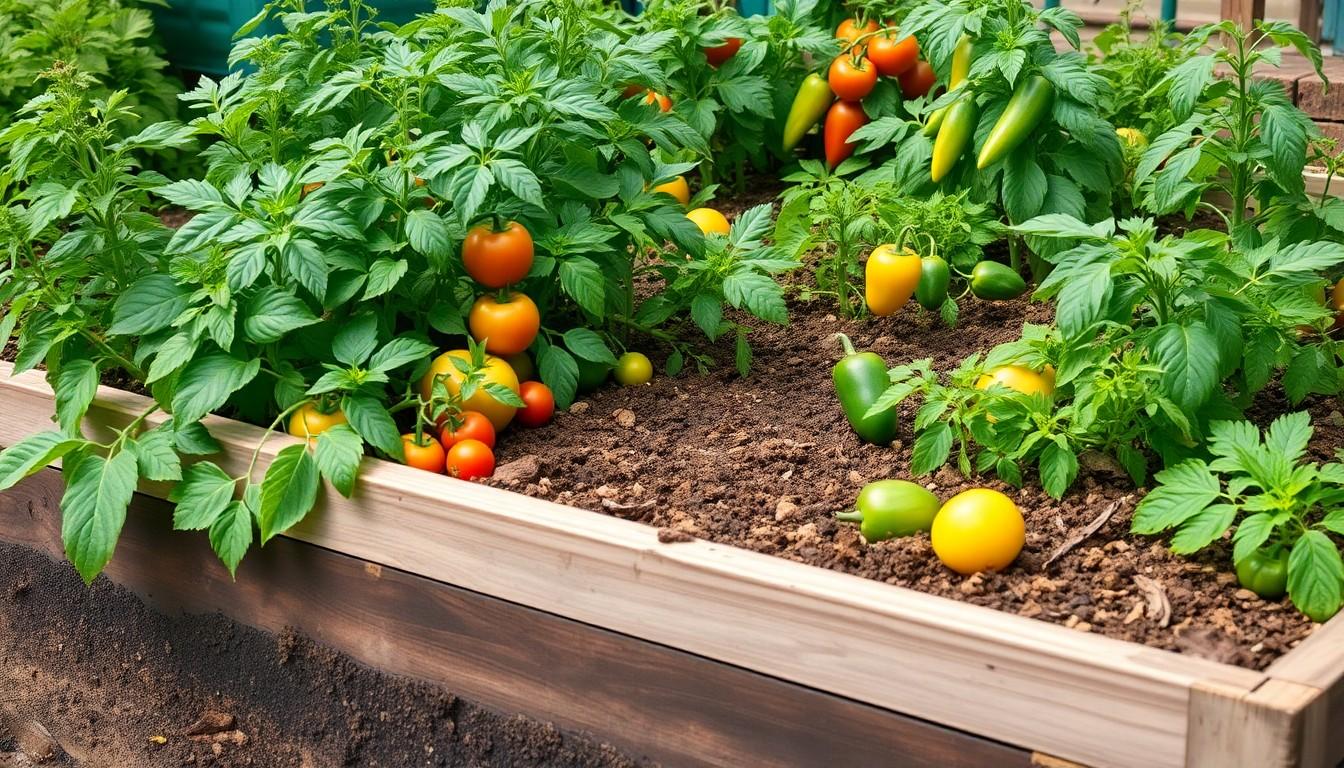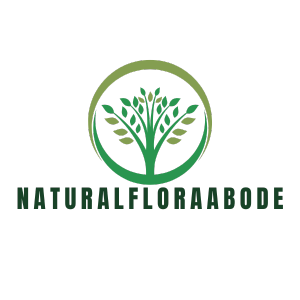The Best Fluffy Pancakes recipe you will fall in love with. Full of tips and tricks to help you make the best pancakes.

Best Fertilizer for Raised Bed Vegetable Garden: Unlock Thriving Plants and Bountiful Yields
Growing a vegetable garden in raised beds is like hosting a dinner party for your plants. They get the best seat in the house, but without the right fertilizer, it’s like serving them instant noodles instead of a gourmet meal. If you want your veggies to thrive and impress, choosing the right fertilizer is key.
Imagine biting into a tomato so juicy it could star in a summer blockbuster. That’s the power of quality fertilizer. It’s not just about throwing some dirt and seeds together; it’s about creating a nutrient-rich environment where your plants can flourish. From organic options to balanced blends, the right fertilizer can turn your garden into a green paradise. Get ready to dig in and discover the best fertilizers that’ll have your raised beds bursting with flavor and vitality.
Overview of Raised Bed Vegetable Gardening
Raised bed vegetable gardening involves planting vegetables in elevated structures, which allows for better drainage, improved soil quality, and enhanced accessibility. This method supports a more controlled growing environment, making it easier to manage soil composition and fertility. Gardeners benefit from the ability to customize their soil mix, ensuring that plants receive optimal nutrients.
Soil depth in raised beds typically ranges from 12 to 24 inches, depending on the vegetables grown. Root development often thrives in these depths, promoting healthier plants. Various materials, such as wood, stone, or composite materials, can serve as borders for these beds, creating a defined space for gardening.
The advantages of raised beds extend to pest control and weed management. Elevated structures deter some pests and reduce weed competition. Many gardeners find that the warmth of soil in raised beds encourages earlier planting and longer growing seasons.
Fertilization plays a crucial role in raised bed gardening. Regularly enriching the soil with the best fertilizers ensures that vegetables absorb necessary nutrients. Organic options, such as compost and well-rotted manure, provide beneficial microorganisms that enhance soil health. Balanced blends offer a convenient solution for providing essential nutrients rapidly.
Ultimately, raised bed vegetable gardens yield vibrant and productive crops, making them a favorite among home gardeners. By prioritizing nutrient-rich soil and optimal fertilization, gardeners can cultivate a variety of vegetables successfully. This approach promotes sustainable practices and fosters a love for gardening that can last a lifetime.
Importance of Fertilizer in Raised Beds

Fertilizer plays a pivotal role in ensuring healthy growth in raised bed vegetable gardens. Nutrient deficiencies can limit plant development and reduce yields significantly.
Nutrient Needs of Vegetable Plants
Vegetable plants require essential nutrients like nitrogen, phosphorus, and potassium. Nitrogen supports leafy growth, phosphorus promotes root and flower development, and potassium enhances overall plant health. Different vegetables, such as tomatoes, peppers, and cucumbers, have varying nutrient needs, making tailored fertilization crucial. Soil testing helps identify specific deficiencies and ensures that each vegetable gets the right nutrients. Organic amendments like compost also contribute valuable micronutrients and improve soil structure.
Common Fertilizer Types
Several fertilizer types are available for raised bed gardens. Organic fertilizers, such as compost and well-rotted manure, improve soil health and provide slow-release nutrients. Balanced chemical fertilizers offer precise ratios of nitrogen, phosphorus, and potassium for targeted feeding. Slow-release granular fertilizers supply nutrients over time, reducing the risk of over-fertilization. Liquid fertilizers deliver quick nutrient boosts, ideal for addressing immediate plant needs. Choosing the right type depends on the garden’s specific requirements, crop types, and existing soil conditions.
Factors to Consider When Choosing Fertilizer
Selecting the right fertilizer involves various factors that significantly impact plant growth. Gardeners should consider soil composition, plant variety, and the choice between organic and synthetic fertilizers.
Soil Composition
Soil composition plays a vital role in determining nutrient needs. A well-balanced mix of clay, silt, and sand influences how fertilizers interact with the soil. Soil tests reveal nutrient levels and pH, dictating amendments to optimize fertility. Incorporating compost improves soil health while providing essential nutrients. Depending on the existing soil quality, additional amendments might be necessary to create a nutrient-rich environment.
Plant Variety
Different vegetables exhibit specific nutrient requirements. For instance, leafy greens often thrive with higher nitrogen levels, while root vegetables benefit from phosphorus and potassium. Each plant’s growth stage also determines nutrient needs. Young seedlings require balanced fertilizers, while mature plants may need targeted nutrient boosts. Understanding the varieties in the garden helps tailor fertilization strategies effectively, enhancing growth and yields.
Organic vs. Synthetic Fertilizers
Organic fertilizers, derived from natural sources, enrich the soil without chemical additives. These options promote beneficial microorganisms and improve long-term soil health. Synthetic fertilizers, however, supply quick nutrient access, aiding in immediate plant needs. Each type offers distinct advantages; choosing between them relies on personal gardening philosophy and specific garden goals. Balancing both types can also yield successful results in raising healthy vegetables.
Top Recommended Fertilizers
Choosing the right fertilizer enhances plant growth and contributes to a thriving raised bed vegetable garden. Here are some top choices.
Organic Options
Organic fertilizers enrich the soil with vital nutrients while promoting long-term health. Compost offers a nutrient-rich amendment that improves soil structure and moisture retention. Well-rotted manure serves as a potent source of nitrogen and other essential nutrients, enhancing overall soil fertility. Fish emulsion provides a quick nutrient boost ideal for leafy greens. Blood meal, a concentrated nitrogen source, effectively stimulates growth in heavy-feeding vegetables like tomatoes. Use these organic options responsibly to maintain a sustainable gardening practice.
Synthetic Options
Synthetic fertilizers deliver nutrients quickly and efficiently, making them a convenient choice for immediate results. Balanced chemical fertilizers, such as 10-10-10 or 5-10-5 formulas, support various crops with essential nutrients like nitrogen, phosphorus, and potassium. Granular options offer slow-release properties, ensuring a steady supply of nutrients over time. Liquid fertilizers can be diluted with water for rapid absorption, resulting in quick greening for hungry plants. Consider these synthetic options when immediate nutrient availability is crucial for optimal plant growth.
Tips for Applying Fertilizer Effectively
Applying fertilizer effectively enhances nutrient delivery and promotes robust vegetable growth. Select the right type based on specific plant requirements. Research shows that balanced blends offer quick nutrient solutions, while organic options, such as compost and well-rotted manure, provide long-term soil benefits.
Timing significantly impacts fertilization results. Fertilize vegetables at the beginning of the growing season to support robust initial growth. Consider additional applications throughout the season for plants with high nutrient demands, like tomatoes and peppers.
Technique matters when applying fertilizers. Use granular fertilizers by broadcasting evenly across the bed and tilling them into the top inch of soil. Liquid fertilizers require dilution according to the manufacturer’s instructions, followed by watering the plants to facilitate absorption.
Frequency is fundamental. Test soil to determine existing nutrient levels and needs. Regular soil testing guides targeted applications, preventing nutrient overload, which can harm plants. Aim for applications every 4 to 6 weeks during the growing season for optimal results.
Observation plays a crucial role in effective fertilization. Watch for signs of nutrient deficiency, such as yellowing leaves or stunted growth. Tweak fertilization plans based on these observations to ensure plants receive necessary nutrients.
Also, consider incorporating mulching practices. A layer of mulch can reduce nutrient leaching by protecting soil from heavy rains and promoting moisture retention. This practice supports a healthy growing environment for vegetables.
Incorporating these tips into gardening routines can significantly improve the overall health and productivity of a raised bed vegetable garden.
Conclusion
Selecting the right fertilizer is vital for a thriving raised bed vegetable garden. By understanding the unique needs of different plants and the importance of soil composition, gardeners can make informed choices that promote healthy growth. Whether opting for organic solutions or balanced synthetic options, the key lies in tailoring fertilization strategies to specific vegetable requirements.
Regular soil testing and careful observation can help identify nutrient deficiencies, ensuring plants receive the support they need. With the right approach to fertilization, gardeners can enjoy bountiful harvests and cultivate a sustainable gardening experience that fosters a deeper connection with nature. Prioritizing quality fertilizers is the first step toward achieving a vibrant and productive garden.
